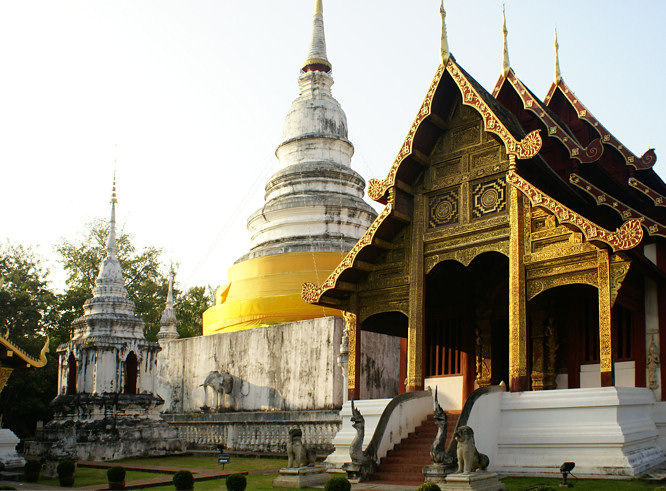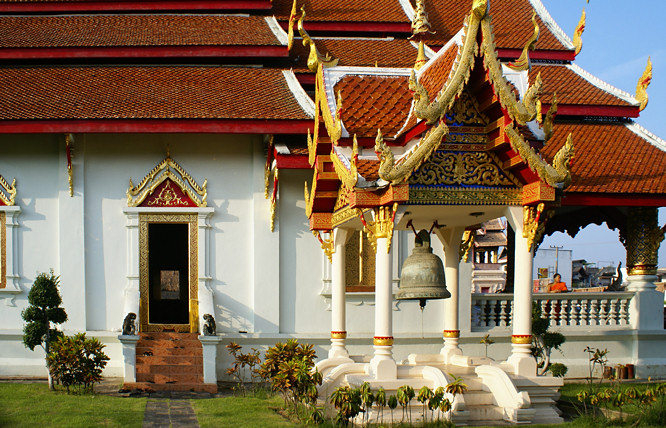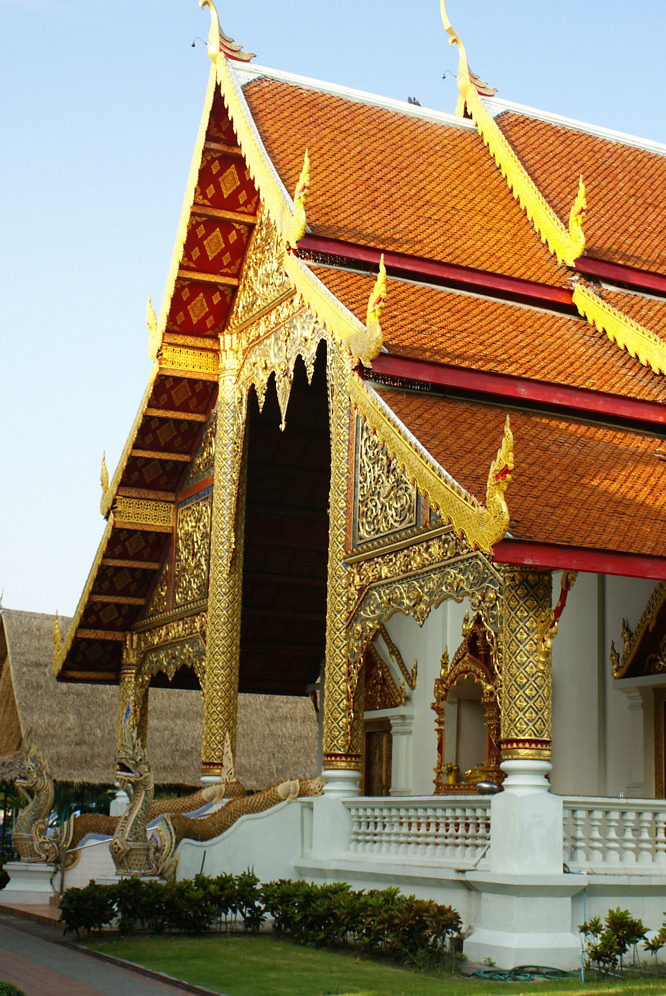Chiang Mai's Wat Phra Sing Waramahawihan Temple
You will find the Wat Phra Sing temple complex (Monastery of the Lion Buddha ) near the centre of the ancient walled city of Chiang Mai in Thailand on the Sam lan road at the junction with Rachadamnoen Road.

It is worth visiting to see the huge chedi. All the Buddhist temples have Chedi (monolithic stupas, shaped like giant bells, each of which houses a relic of Buddha, such as one of his bones or the ashes of an important monk or king). and Viharas (great prayer halls). Wat Phra Sing's chedi is different to the gold covered chedi of most of the other temples in Chiang Mai. Instead of metal or paint this chedi is decorated with meters and meters of yellow cloth.
The Buddhist temple Wat Phra Sing was built in 1385 by King Pha Yu of the Mengrai dynasty to enshrine the remains of his faher, King Kham Fu. It may have been the first monastery to house the Emerald Buddha, a cultural treasure that now resides at the royal palace in Bangkok. The main Buddha image, is an ancient statue from around 150 AD and comes originally from Sri Lanka. It was brought to Thailand over 600 years ago. The temple has long been a teaching monastery for the Pali language. All the buildings in the temple complex are constructed in the classic Lanna-style of architecture.

Despite the monastery's cultural renown, it almost fell into ruin in the 18th century when Chiang Mai was largely depopulated. It was only during the reign of Chao Kawila in the early 1800s that the monastery began to be repaired, a process that continued during the reign of his successor, Chao Thammalangka, who sponsored the mural paintings now seen in Viharn Lai Kham. The original name of the temple was Wat Li Chiang Phra but this was changed to Wat Phra Singh when the Phra Sihing Buddha image was first housed there in 1367.
There are gardens and lesser shrines that stretched around the main Wat Phra Sing Viharas prayer hall. Wat's are not just temples but also monasteries where monks sleep eat and receive training. To enter the viharn you must remove your footware and step across the threshold barefooted. Inside is a long assembly hall where the faithful worship a 10ft golden buddha. Electric fans cool worshippers in this red teak room and monks burn incense in front of their gold idol. The older teenage monks often speak English and welcome talking to visitors. Ask questions about elements of the Wat Phra Sing temple you do not understand and Buddhist teachings.

Carved golden mythical snake Naga's flank stairs leading up to the rear of the viharn, and golden Chedi stupa's, The Naga is a deity, a king cobra hooded, found in Buddhism as well as Hinduism. A notable Naga in the Buddhist tradition is called Mucalinda, protector of the Buddha. In many paintings, carvings and sculptures the Naga is seen covering the head of the Buddha shielding him from the rain whilst he meditated under a Bodhi tree. For seven days the heavens opened up and continually rained. The mighty king of serpents, Mucalinda, came from beneath the earth and protected with his hood, Buddha, the one who is the source of all protection. When the great storm had cleared, the serpent king assumed his human form, bowed before the Buddha, and returned in joy to his palace
There is an unusual smaller wooden teak built temple on top of a tall stone pedestal. This type of building is called a ubosot, have a look at the has ornate carvings around its doors and stucco patterns on the wooden pillars. It is an ordination hall, where new monks are ordained and other important ceremonies take place. The ubosot is not necessarily the largest building in a temple compound, and may not always be open to the public. In fact, the ubosot is supposed to be off limits at all times to women, but this rule is seldom enforced. The ubosot, which is usually locked, contains a tower-like shrine known as a mondop.
Travel books

